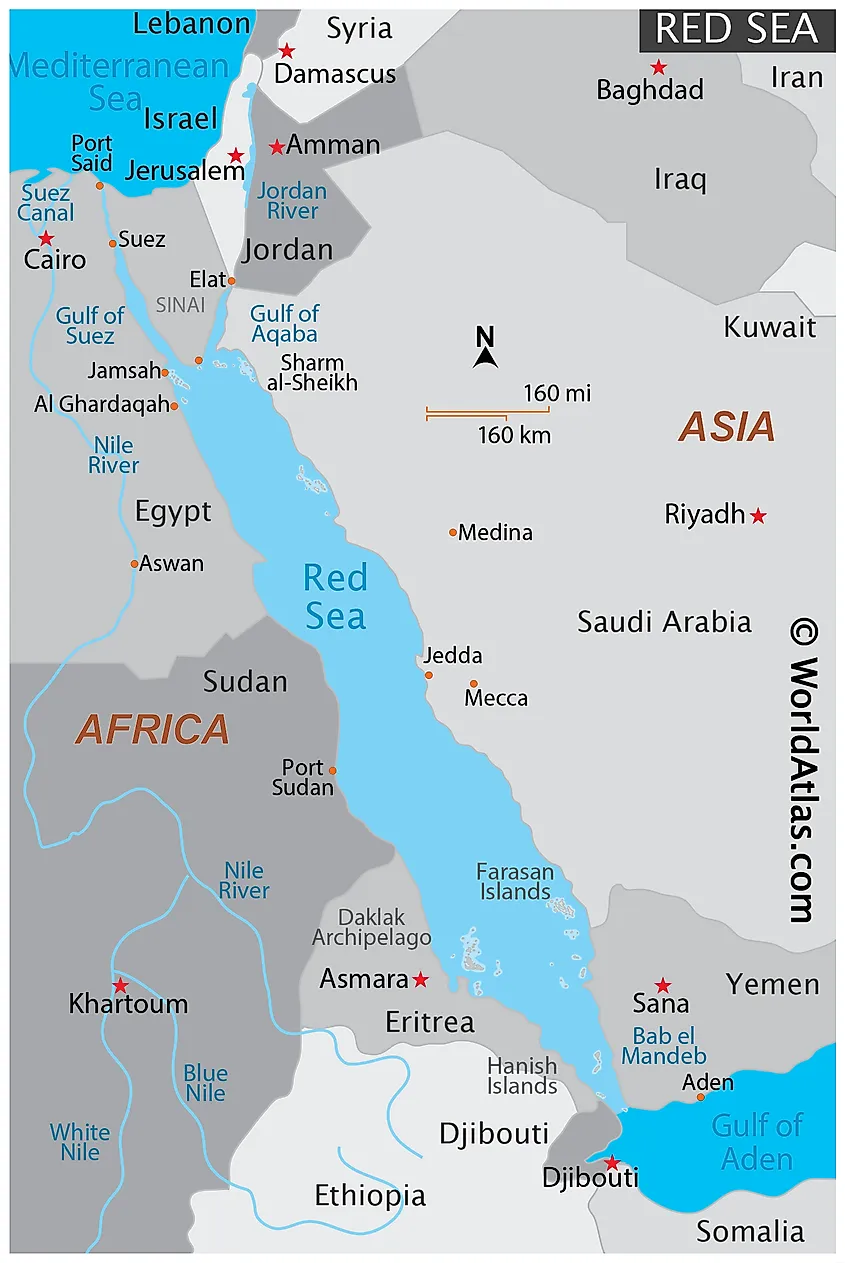The Iranian Naval Threat Expands


At the Annual Economist Government Roundtable in Greece on July 5, 2022, Israeli Defense Minister Benny Gantz disclosed, “Iran is methodically basing itself in the Red Sea, with warships patrolling the southern region.” He added, “The presence of Iran’s military forces in the Red Sea in recent months is the most significant in a decade. It directly threatens trade, energy and the global economy.”
A short time earlier, a website that opposes the Iran-supported Houthi rebels in Yemen reported that, on June 28, 2022, Somali security forces in Bandar Beyla on the Arabian Sea captured two weapons-laden boats that the Houthis, with help from Iran’s Islamic Revolutionary Guard Corps (IRGC), were trying to deliver to the Somali terror organization Harakat al-Shabaab al-Mujahideen, Al-Qaeda’s affiliate in East Africa, more commonly known as “al-Shabaab.”
The report said that the boats, which had Somali and Yemeni crews, belonged to Ahmad Matan, a Somali smuggler behind an October 2017 truck bombing that killed more than 500 people. The smuggling is reportedly conducted from Somalia to Yemen and vice versa.
In November 2021, the organization Global Initiative against Transnational Organized Crime reported that weapons deliveries from Iran to the Houthis had found their way to Somalia. Some navigation systems on arms-smuggling ships intercepted by the US Navy showed exit points from the port of Jask in Iran—where the IRGC navy (IRGCN) and the Iranian navy (IRIN) operate—and the port of Mukalla in Yemen, which is used for Yemeni and Somali smuggling.
In May 2021, the US warship USS Monterey confiscated a massive weapons shipment whose source was apparently Iran. On July 7, 2022, the UK revealed that on January 28 and February 25, 2022, Royal Navy ship HMS Montrose’s Royal Marines seized Iranian weapons from speedboats being operated by smugglers in international waters south of Iran.
In recent years, the IRGCN, which has conducted most of Iran’s naval activity in the Persian Gulf region, has spread to the Arabian Sea, the Red Sea and the Mediterranean. In the Arabian Sea and Red Sea region, this presence is mainly clandestine. Civilian vessels are used to collect intelligence and deliver arms to the Houthis. In some of its operational activities, the IRGCN—granted priority for equipment, manpower and training—was aided by the IRIN.

The Iranian presence in the Arabian Sea and the Red Sea hides behind slogans of the international war on piracy. However, it is also used for Iranian operational activity and arms smuggling to the Houthis in Yemen, Somalia and Palestinian terror organizations in Gaza and Lebanon. As part of Iran’s aggressive drone strategy, converted ships used by the IRGC navy and the Iranian navy serve as launch platforms for drones, fast-boats and explosive-laden naval suicide boats (GPS-guided and unmanned) that can strike targets in the Mediterranean, including Israeli gas rigs.
These Iranian naval capabilities are well-suited to Iran’s asymmetric-warfare doctrine. Some are now in use against Saudi strategic infrastructure, including attacks on oil facilities at sea and on land, on Saudi ships operating off the Saudi coast and for Iranian retaliatory attacks against foreign assets in the region.
Moreover, Iran is smuggling arms to the Horn of Africa to step up its involvement in the region, particularly in Somalia, which is not only a destination for arms smuggling but also a transit station for moving arms up the Red Sea towards the Mediterranean.
Iran’s naval activity in the region has been hit by hard times, including mysterious attacks on Iranian ships and the confiscation of weapons on ships and boats originating in Iran. Yet Iran will continue its seaborne activity in the region, upgrade its drone-launching capabilities from maritime platforms and deliver arms to its allies in the area, Palestinian terror organizations and Hezbollah.
With ongoing air strikes against its proxies in Gaza, Yemen, Lebanon, Syria and Iraq, Iran attaches great importance to surface-to-air weapons. Accordingly, it will continue to upgrade its proxies’ capabilities in this regard with 358 SAMs and MANPADS and other air defense capabilities through smuggling via air, land and sea.
An increased Iranian naval presence—including IRGC forces tasked with logistical assistance and terror—intensifies the threat to international commercial and shipping lanes. It augments Iran’s ability to attack ships, such as the strike on the MT Mercer Street cargo ship off the coast of Oman in July 2021. The US Central Command stated that the drone that hit the ship and killed two crew members was manufactured in Iran.
The improvement in Iran’s naval warfare, aerial and sea drones, fast-boats and missile capabilities from maritime platforms all give Iran the ability to operate against targets at sea in asymmetric warfare and to develop a possible response against Israel in retaliation to ongoing attacks on Iranian security assets and nuclear targets.
No comments:
Post a Comment